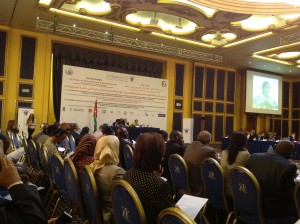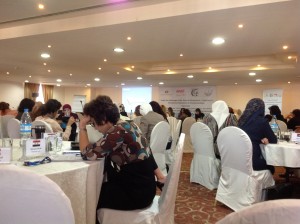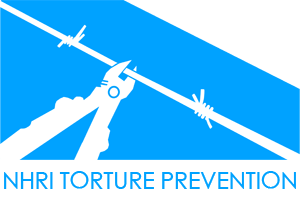
For the past four days I have been attending the 11th Annual Conference of the International Coordinating Committee of National Human Rights Institutions (ICC) in Amman, Jordan. It has been an insightful few days spent in the company of National Institutions from across the globe as well as civil society activists. Indeed, the Conference incorporated a parallel NGO Forum which ran alongside the official proceedings and was invited to submit its own recommendations to be included in the final outcome document: the soon to be released Amman Declaration. Given the regional context and thematic of the meeting – gender equality and women’s rights – I was particularly keen to attend the meeting and gain some perspective on the opportunities and challenges which currently face human rights advocates in the Middle East.
Perhaps unsurprisingly, given the NHRI phenomena remains largely under the radar for many of my colleagues in the social science and legal academies, I was the only ‘Expert Observer’ in attendance. Given the location, the meeting was, however, well attended by NHRIs and NGO activists from across the Middle East. Myriad organisations, including the OHCHR, Asia Pacific Forum (APF), ANNI: Asian Network on NHRIs (ANNI), ICC, the Jordanian National Centre for Human Rights and the NGO Amman Center for Human Rights Studies facilitated the various plenary sessions and we enjoyed, for the most part, a high level of substantive discussion. It was also good to reconnect with NHRI contacts, many of whom I had not seen since attending the 2008 International ICC meeting in Nairobi, my first assignment as the newly minted ‘NHRI Fellow’ at Harvard Law School.
For a researcher on NHRIs, these meetings offer a rare chance to bend the ear of high-level NHRI officials (most heads of delegation are the Chief Ombudsman or Commissioner), UN officials working in the National Institutions and Regional Mechanisms Unit, as well as various other expert NHRI observers and INGOs. It also brings home the human interest side of my political science research; in particular I enjoy discussing topics – both concrete and abstract – with some of the more thoughtful and impressive individuals that populate the NHRI world. Thanks to the current Chair of the European Regional Group of NHRIs, I was also able to sit in on the candid discussions of the regional group meetings.
The results of four days in plenary can be found in mountains of notes and an impressive collection of business cards. I am still mulling over what I have learnt and no doubt the many conversations and reflections will gradually seep into my thinking (and eventually into research). Right now, I am content to say that my experience in Amman has been a valuable one. A few thoughts:
- Saudi Arabia: On Sunday I attended the parallel forum of NGOs which also focused on the theme of gender and women’s rights. The meeting was well represented by women’s NGOs from across the MENA, including Syria and Saudi Arabia. Upon asking the Saudi Arabian representative sat at my table what NGO she worked for I was told that her organisation did not formally exist as it had not been approved by the Ministry of Social Affairs. For more information on the status of NGOs in Saudi Arabia see here.
- Rights politics: the content of discussion in the NGO forum was focused principally on fundamental rights of political participation for women. There were some sobering interventions by rights defenders in Syria and one communiqué from a woman activist imprisoned in Iran. The immensity of the challenges which confront these activists was apparent, a recurring theme being the strategic deficit (where are the opportunity structures in these contexts?) and how to hold onto the fragile gains made during the ‘Arab Awakening’ (following Robert Fisk’s preferred formulation)
- NHRIs and hope: In a discussion on coordination between NHRIs and NGOs on human rights action I asked the panel whether it is always better to have an NHRI than not? NGO representatives from India and Malaysia insisted that the answer was yes. That NHRIs offer a way in which to meaningfully engage state structures on human rights. Although they admitted some of these institutions “are useless”, they asked the room to not underestimate the potential for unintended consequences. The Malaysian NHRI, under new leadership, has recently become an authoritative voice for human rights in national debate. The Malaysian NGO representative said that such developments gave human rights defenders hope that dormant structures always possess the potential to be enabled.
- NHRIs and domestic compliance constituencies: A few sceptical voices in the NGO Forum asked what good was an NHRI in Jordan when it cannot compel authorities to act? Similarly, how responsive could they expect NHRIs in their countries to be to the demands of civil society when they are all appointed by government or the monarch? The ANNI representative drew on the case of India to illustrate the potential for civil society to influence the performance of NHRIs. In particular, he recounted how ANNI had made over two hundred FOI requests for the release of information on the Human Rights Commission. With this information, a highly detailed and critical report was produced on the failings of the Commission. However, the ANNI response left unanswered what NGO activists in the room should do to leverage accountability in authoritarian contexts where FOI requests are not an option.
- ANNI and NHRIs in the AP: ANNI continues to impress in its advocacy around NHRIs in the Asia Pacific region and its ability to leverage compliance with international standards through its sophisticated reports and lobbying of international NHRI accreditation authorities. However, it has been criticised at times for being too critical of the region’s NHRIs and in the process undermining its strategic impact. The launch of the 2012 report was illuminating. Almost all of the region’s NHRIs were in attendance and addressed the meeting. All praised the work of ANNI while also calling for greater engagement with individual NHRIs in the production of reports and more sensitivity to the challenges that they face in their work. As an indicator of success, the participation of NHRIs in the launch and the seriousness with which the Indian Commissioner (who has been at the receiving end of considerable criticism) engaged with its findings was notable.
- What is an NHRI? Reflecting on my own work and the ability of NHRIs in Latin America to slip the leash of their political masters, I noted a similar dynamic in discussion on the Asia Pacific region – although such acts of defiance appear more fleeting (three-year tenures in the case of the Malaysian NHRI cannot help). However, I was also struck by the Asia-Pacific NGO community’s understanding of NHRIs and their explicit claim of ownership. For instance, the ANNI representative stated at one point, “they are our institutions, they are not institutions of the state”. In another conversation with an NGO representative from Europe, she also disputed their status as state bodies, rather they are “independent bodies funded by the state”. The location of NHRIs within their political systems vis-à-vis other actors within and outside state structures clearly continues to vex observers. NB. ANNI’s view on this question likely contrasts markedly from that held by the many civil servants who tend to populate NHRIs in Western European and Commonwealth jurisdictions.
- Human rights protest: on Monday the ICC Conference was opened by the UN Deputy High Commissioner for Human Rights. She was followed by the Jordanian Prime Minister who shared with the delegates the many achievements of the Jordanian government on human rights, and in particular rights for women. As a statement of intent it was admirable. However, reflecting on the gap between rhetoric and reality, the PM’s address was suddenly interrupted by four courageous women protesters directly behind me waving placards and asking: “Prime Minister, where are my rights?” Amid the applause, it quickly became a press scrum. I note, however, that the article on the Conference which appeared in the Jordanian Times the following day made no mention of the protest.
- The Myanmar NHRI: I was able to chat briefly with the Chief Commissioner of the newly created Myanmar Human Rights Commission. The rapid proliferation of NHRIs (from 20 in 1990 to 108 in 2012) may have slowed but it continues, albeit at a much slower pace, often in highly adverse contexts. Myanmar surely represents the boldest frontiers of the global NHRI project. Supported by the OHCHR, APF and the Raoul Wallenberg Institute, those involved emphasise that they are not ‘Pollyanna’ about the prospects for success (however calibrated) and acknowledge the severe challenges ahead. According to the Commissioner, it has begun to function, although he admitted that human rights is an entirely alien concept in the country.
- The merger of the Irish Human Rights Commission and Equality Authority: I was surprised to learn in Alan Shatter’s response to a question in the Oireachtas on 24 October that the OHCHR was entirely satisfied with the department’s position on the merger process, in particular the two-tier definition of human rights contained in the Heads of Bill. After seeking clarification, it appears that the Minister’s account was not accurate. The OHCHR has expressed its concerns regarding the two-tier definition; although this does not appear to be the main stumbling blocks with the proposed legislation. Serious concerns persist regarding three issues – funding, method of appointment, and independent reporting. I will be following developments closely and reflecting on the international dimension in my report on the merger.







